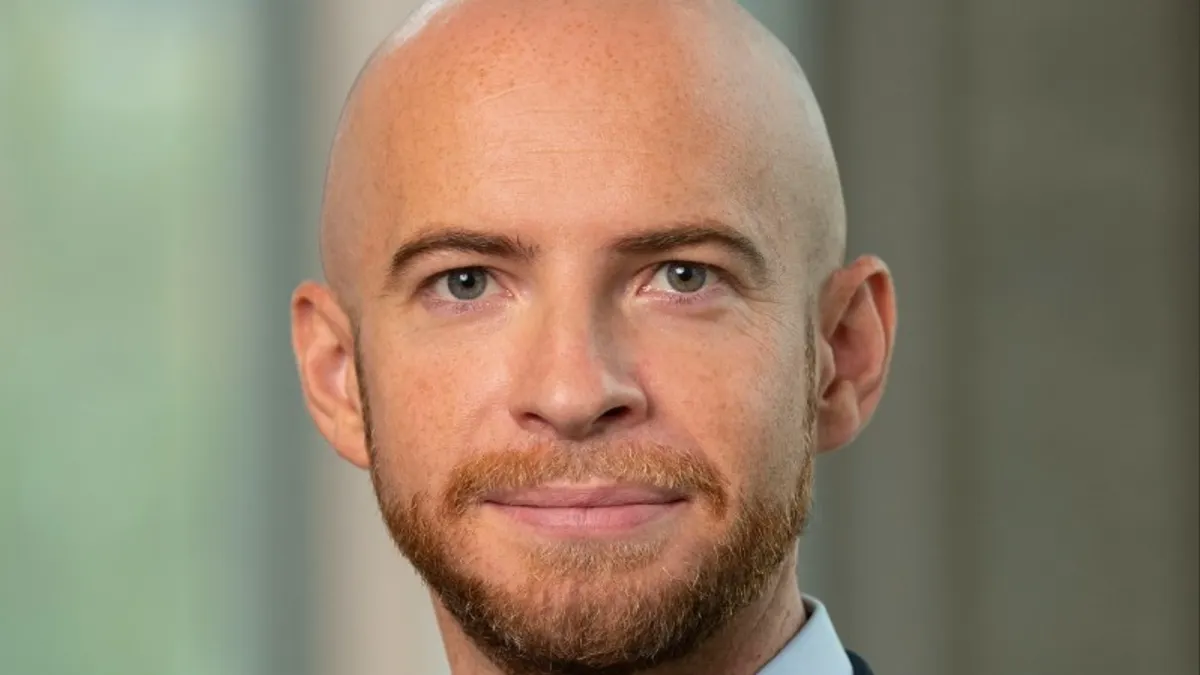A lot has changed during the past 20 years in pharma. Some of the “big moments” are tied to the arrival of new drugs — such as cell and gene therapies, mRNA products and immuno-oncology drugs. While others are tied to breakthrough technologies that advance science and patient care. Yet, for others inside the industry, some of the most recent pivotal moments go beyond the new products being developed — and are about how companies are now doing business.
For this final installment of our ongoing series, “PharmaVoice Forecast,” we asked executives to define the opportunities that lie ahead for their organizations, and the industry as a whole. While looking ahead, we asked them also to reflect on what they believe were the most momentous changes that have impacted the life-sciences industry over the past 20 years.
Here’s what this group of leaders had to say about various innovations that are changing life in pharma as we know it.
Technology reinventing healthcare
“I will challenge anyone who does not agree that the internet and digital connectivity has made the most significant impact in life sciences and on the world. The World Wide Web was born more than 20 years ago, but related technological leaps — from broadband to smartphones to telehealth — have reinvented healthcare.
Most excitingly for me, we’ve seen a tipping point in social health: human connections that make our world healthier, enabled by digital technology. Pharma is now part of a limitless constellation of connections for patients — online health communities, social media groups, telehealth, etc.; plus online clinical trials, non-personal selling; and TikTok docs and HCP social media influencers.” ~Jack Barrette, chief innovation officer, Health Union, PharmaVoice Red Jacket
Personalizing HCP outreach
“Pharma communications have been dramatically disrupted by the rapid adoption of innovative technology to address the increasing demand for personalized digital strategies to reach individual healthcare providers. Healthcare marketers today are increasingly using multi-channel, e.g., mobile, desktop, online, techniques that are already common across traditional consumer products.
Moreover, even before the pandemic, the shift away from in-person pharmaceutical representative sales was becoming evident when 77% of HCPs were accessible in 2008 to 54% just six years later. Today, just 10% of HCPs want to return to the pre-pandemic norm of in-person meetings. The 27% increase in digital pharma spend in 2020 alone is noteworthy given pharma’s traditionally lower investment as compared with other industries.” ~Jason Bernstein, director and head, medical communications strategy, epocrates
A data science explosion
“Life-science researchers have incredible volumes of data coming at them daily. Many folks describe ‘drowning in data but starving for information.’ We really need to do a much better job of extracting insights from these extremely multi-variable data sets in ways that the non-expert can quickly exploit, and at the same time ensuring that researchers have the data-oriented tools to improve the design and gathering of that data in the first place.
Data science has exploded in visibility, and while there will always be a need for specialists in that field, the data gathering systems/tools/devices themselves need to put in a lot more effort to close the loop for the researcher, rather than just tossing them a lot of numbers.” ~Christopher Brown, chief technology officer and co-founder, 908 Devices
The untapped potential of online communities
“Online health communities, and the power they have to bring people together and provide relevant information at meaningful moments, remain one of the biggest opportunities for the life-sciences industry to unlock. Research has shown that online communities, especially when they are moderated and provide meaningful, personal content, can have a positive impact on quality of life and help patients feel supported. There remains untapped potential for these communities to impact the entire patient journey. Over the next few years, I believe we will see online health communities playing an important role in every aspect of the patient journey, including drug discovery, clinical trials, condition management and improving communications with HCPs.” ~Olivier Chateau, co-founder and CEO, Health Union, PharmaVoice Red Jacket
The patient shift is on
“Patient empowerment is the most momentous change impacting the life-sciences industry in terms of communication. Facilitated and encouraged by the advent of digital and especially social media, the ‘ePatient Movement’ has helped transform a traditionally paternalistic healthcare system into one that increasingly incorporates the patient voice. The result is improved focus on the end user and ultimate beneficiary of health services, namely, the patient, and in a manner that evolves the system from a reactive to a proactive mindset.
By more openly communicating with and listening to patients, the pharmaceutical industry is shifting from treatment of disease to continuous management and even prevention. Arguably nowhere is this trend more significant than in the early drug development phases, especially related to clinical trial design, recruitment, and retention — all with pain points that empowered patients can address.” ~Nico Coetzee, chief marketing officer, CureClick
Scaling personalized medicine for the masses
“In personalized therapeutics, such as CAR-T cell therapies, the biggest opportunity lies in opening the aperture. Right now, we’re treating tens of thousands of patients with personalized therapies for late-stage cancer and serious genetic disorders. We need to scale that to millions of patients. To do that, we must create a new, patient-centric healthcare infrastructure to enable the production and delivery of these therapies at scale.
We need data management and analytics systems to improve efficiency and reduce costs. We absolutely require advanced digital technology to keep each product tied to the right patient, so that we preserve patient safety and don’t treat the wrong patient with the wrong therapy, which would be catastrophic. And we need the mechanisms to follow patients years — even decades — after their treatment, to understand efficacy and value. If we can seize this opportunity, we’ll make these transformative therapeutics available to patients in need, worldwide.”~Amy DuRoss, co-founder and CEO, Vineti, PharmaVoice 100
Moving beyond pilot programs
“I think many will agree that the silver lining of a global pandemic accelerated the digital transformation of many life-sciences companies because they had no other choice but to adapt. Those who were already thinking ahead benefitted from their investment in innovation. Those who were the laggards swiftly — and uncomfortably — pushed themselves into a new way of working. In some cases, we easily saved five to 10 years of pilots due to the pandemic.” ~Joe Dustin, vice president, product strategy, Medable, PharmaVoice 100
Seizing on a sense of urgency
“As an HIV physician and as a daughter of Africa, I’m inspired by innovations in antiretroviral (ARV) therapy over the last two decades and the global commitments, such as the Global Fund and the President’s Emergency Plan for AIDS Relief (PEPFAR), that ensured they reached communities across Africa. Those actions changed the trajectory of a continent.
There are moments in time – and we are living in one right now with COVID – when our understanding of what is possible with a shared sense of urgency and broad-based mobilization gets reimagined. In my role at Merck for Mothers, I’ve seen the power of establishing connections, including digital connections, to deliver critical health information and services, to advocate for policies shaping healthcare delivery, and to empower women and girls to access the services they need. These efforts support health and well-being within underserved communities and are transformational for societies.” ~Mary-Ann Etiebet, MD, associate vice president, health equity, Merck & Co. Inc.
Biosimulation adoption
“Two decades ago, biosimulation was in its early days with a handful of regulatory guidances from the FDA. Since then, we have experienced rapid growth in innovation in biosimulation tools and adoption by the pharmaceutical industry and regulators. Today, almost all novel drug programs incorporate some biosimulation, such as population pharmacokinetic modeling or mechanistic modeling, to determine the right dose for the right patient or improve the clinical trial design.
We have also been able to shorten or waive clinical studies using biosimulation, including drug-drug interaction and bioequivalence studies. In the past decade, the FDA has released more than a dozen guidances that include biosimulation, and regulatory agencies in Europe, Japan, and China have issued guidances as well. There is still significant opportunity for more innovation and greater adoption of biosimulation, but we have made incredible progress and the momentum continues to build.” ~William Feehery, CEO, Certara
EHRs changing health
“The HITECH Act of 2009, which enabled the electronic sharing of health data and information, dramatically changed not just the life sciences industry but health overall. The growth of EHRs improved HCPs’ access to patient information, streamlined care, empowered consumers to take more control of their health and spawned a whole new industry of health data and platforms. From a life-sciences perspective, it transformed marketing and other functions including sales, R&D and business development to be more proactively data-driven.
We still have a long way to go, but the health data genie is out of the bottle. Life-science marketers are making the pivot from mass marketing, which was good enough but never went all the way to serve a personalized category like health, to being more insightful and responsive to the health customer’s needs.” ~Sloan Gaon, CEO, PulsePoint
Digital health technologies crucial to decision-making
“With a respectful nod to the incredible science taking place in genetics, I choose a development closer to my area of focus: digital health technologies. The combination of wearable devices, internet of things, cloud computing and big data are revolutionizing the way we collect information, interact with patients, research new therapies, understand trends, talk to our physicians and manage our own health. These technologies support everything from personal fitness to research to population health. They help us make decisions as individuals, as scientists, as healthcare providers and as governments. And it’s just getting started.” ~Dave Hanaman, president and chief commercial officer, Curavit
RWE critical to innovative therapies
“The pandemic has had an enormous impact on the industry. It was a catalyst for change. We’ve witnessed collaborations and innovations that resulted in the development of new therapeutics in record-breaking time. We’ve seen digital medicine more fully embraced. Once considered leading-edge, decentralized clinical trials are now the new normal in how we conduct trials. We are also seeing more potential for the application of real-world evidence and its ability to provide the industry with information and insights to enable regulators to make decisions more quickly and confidently on the safety and efficacy of new therapies. Moving forward, RWE will play a critical role in the clinical development of therapeutic areas where innovations are needed, such as trials for rare diseases or cell and gene therapy research — a new frontier where RWE data had not been previously available.” ~Jamie Macdonald, CEO, Parexel, PharmaVoice 100



















